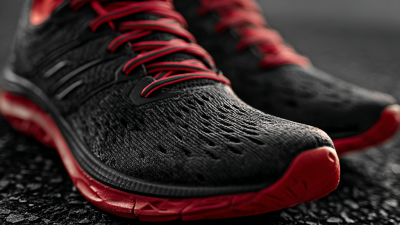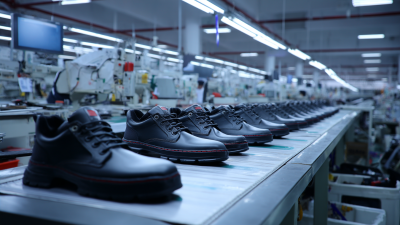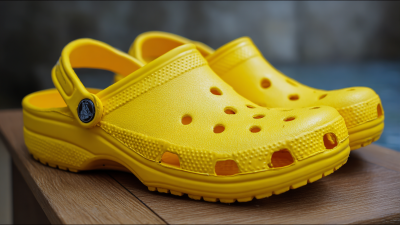
In recent years, the popularity of rubber shoes has surged, not just as a fashion statement, but also for their perceived comfort and support. As consumers become more aware of the importance of foot health, many are turning to rubber shoes as a viable option. Dr. Emily Carter, a renowned podiatrist and expert in foot biomechanics, emphasizes this trend, stating, "The unique cushioning and flexibility of rubber shoes can significantly enhance foot health, especially for those who are on their feet for extended periods."

Rubber shoes offer a blend of durability and comfort that traditional footwear often lacks. With their lightweight design and shock-absorbing properties, they cater to a broad audience, from athletes to casual wearers. Moreover, the ongoing advancements in rubber shoe technology continue to foster discussions surrounding their impact on foot health. As Dr. Carter points out, it’s crucial for consumers to choose rubber shoes that provide adequate arch support and fit properly to avoid common foot ailments.
In this article, we will delve into the science behind rubber shoes, exploring their materials, design innovations, and the ways they can positively affect foot health. By understanding the intricate relationship between footwear and foot wellness, we can make informed choices that contribute to our overall well-being.
The evolution of rubber shoes traces back to the 19th century when the introduction of vulcanized rubber revolutionized footwear technology. This innovation allowed for the creation of durable, waterproof shoes, providing comfort and protection from various elements. Initially, rubber shoes were primarily utilized in specific sectors like the military and sports, where resilience and grip were paramount. As demand grew, manufacturers began producing rubber shoes for everyday use, leading to the popularization of styles that catered to diverse consumer needs.
In the 20th century, the design of rubber shoes continued to evolve, influenced by fashion trends and advancements in materials. Iconic brands emerged, marrying functionality with style, making rubber shoes not just a practical choice but a fashionable one as well. The focus on foot health became more pronounced, with designs that aimed to provide better arch support and shock absorption. This historical development reflects a broader understanding of biomechanics, highlighting the significance of proper footwear in promoting foot health and overall well-being.
The materials used in rubber shoes play a crucial role in determining both comfort and support for the wearer. Rubber is typically combined with various additives to enhance its durability, flexibility, and cushioning properties. The composition of the rubber used can significantly affect how the shoes respond to different surfaces, providing the necessary support and shock absorption. High-quality rubber blends often feature additional materials like
EVA (ethylene-vinyl acetate) or PU (polyurethane) to increase the comfort level, allowing the shoes to mold to the wearer's foot over time.
Tip: When choosing rubber shoes, look for those that utilize a multi-layered construction, as this often provides better arch support and decreases fatigue during extended wear. Additionally, consider trying shoes with specific foam cushioning systems designed for your foot type to enhance comfort further.
Moreover, the tread pattern of rubber shoes, which is influenced by the rubber composition, contributes not only to grip but also to how the shoe performs on various terrains. A well-designed rubber outsole can help reduce the risk of slips and falls, ensuring that your feet stay safe while walking or running.
Tip: Always test the traction of rubber shoes on different surfaces before committing to a purchase; this can ensure that they meet your lifestyle needs and provide the necessary support in your daily activities.
The biomechanics of footwear, particularly rubber shoes, play a significant role in influencing gait and posture. Research indicates that proper footwear can significantly enhance stability and reduce the risk of injuries. A study published in the "Journal of Biomechanics" found that rubber shoes, due to their cushioning properties, can decrease the impact forces during running by up to 30% compared to hard-soled shoes. This reduction in shock absorption can lead to better energy efficiency and improved performance, showcasing how the right footwear can alter the mechanics of walking and running.
Moreover, the design of rubber shoes often includes features such as arch support and heel height that align with the natural curvature of the foot. A report from the American Podiatric Medical Association highlights that footwear with inadequate support can contribute to various foot ailments, including plantar fasciitis and posterior tibial tendonitis. With 70% of the population experiencing foot problems at some point in their lives, it is crucial to consider how rubber shoes can provide both comfort and functional support, ultimately promoting better overall foot health and biomechanics.
Improper footwear choices, particularly the use of rubber shoes, can lead to various foot health issues such as plantar fasciitis, bunions, and blisters. The lack of arch support in many rubber shoes can result in inadequate foot alignment, increasing the risk of pain in the heels and arches. Additionally, the non-breathable material can create a warm and moist environment, fostering fungal infections like athlete's foot.
To mitigate these risks, it's crucial to choose rubber shoes that provide adequate support and fit properly. When selecting footwear, look for options that offer cushioning and arch support to help maintain foot alignment. Regularly rotating your shoes can also allow for better breathability and reduce the risk of odor and fungal growth.
Another key tip is to pay attention to the fit. It’s always best to try on shoes later in the day when your feet are slightly swollen. Ensure there’s enough room in the toe box to wiggle your toes, and opt for styles that accommodate any specific foot issues you may have, like high arches or flat feet. Prioritizing foot health when choosing footwear can significantly improve overall comfort and well-being.
When it comes to choosing the right rubber shoes, several factors can significantly enhance their impact on foot health. First, prioritize shoes that offer ample cushioning and support. Look for features such as EVA foam soles, which provide shock absorption and comfort during extended wear. This can help reduce fatigue and discomfort, especially if you spend long hours on your feet.
Additionally, consider the fit of your rubber shoes. Ensure they have enough room in the toe box to prevent crowding, as this can lead to issues like bunions or hammertoes over time. A snug heel is crucial, too, as it reduces the risk of blisters and instability. When trying on shoes, walk around in them to assess how they feel and whether they adequately support your arches.
Lastly, pay attention to the outsole of the shoes. A rubber outsole with good traction can help prevent slips and falls, especially in wet conditions. Look for shoes with a patterned tread that provides grip, ensuring safe and comfortable movement. By keeping these tips in mind, you can choose rubber shoes that promote foot health and comfort for everyday activities.






